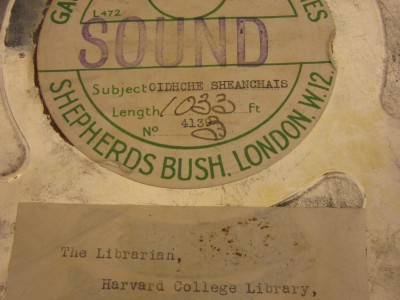
Born in Jerusalem (Palestine) in 1895 as Thomas Toumayan, to avoid military draft he was smuggled, at the age of thirteen and dressed as a girl, onto a boat to Paris. There he changed his name to Thomas Bouchard and worked as an usher in a movie theater, stimulating his passion for the moving image. At sixteen, he went to Canada to search for an aunt who unfortunately had died, then found work with a lumber company as a sapper. In 1916, he traveled to Texas to open a photography studio and worked as a freelance sports photographer for the Houston Chronicle. As he discovered success in chasing images, “being there” at games to catch the action became a necessary prerogative. He later deduced that it also awakened his interest in photographing moving dancers and visual artists.
From California, back to Paris and finally in New York—including stints at Martha Graham's influential summer intensive, Bennington School of the Dance—Thomas Bouchard (1895 - 1984) made photographic and cinematic studies of modern dancers and artists, including Marcel Duchamp, Martha Graham, Hanya Holm, Doris Humphrey, José Limón, Chaim Soutine, Edgard Varèse and Charles Weidman. He was fascinated with the photographic translation of dance, motion and the creative process. Janet Mansfield Soares describes him as an "action" photographer, often "purposely shadowing, blurring, or double-exposing his photographs" to achieve the desired effect. Bouchard's photography regularly appeared in exhibits, books and journals, and as Soares notes, "they have become an invaluable record, along with those of Barbara Morgan, of the budding era of modern dance in America."
[Bouchard] has made no attempt to photograph either the dancer or any of his poses, but rather to catch those transitional moments which contain in themselves both the fruits of the movement that has preceded them and the seeds of that which is to follow. Thus, while he has recognized the impossibility of picturing a complete dance, he has managed to capture in effect whole potential phrases containing something of the essential quality of the dancer's characteristic style. It is perhaps as fine a synthesis as has yet been achieved of two mediums as inherently antagonistic as photography and dancing.
Likewise, his film work was not simply straight documentation; it involved expressionistic cinematography and edits, as well as effects like double-exposure and slow motion in order to recreate or augment the magic of theatrical performances and to elucidate or demystify aspects of the artistic process. The films he directed include the anti-fascist dance film The Underground Printer (1934) with John Bovington, a version of the Doris Humphrey dance film The Shakers (1938), The Golden Fleece (1941) choreographed by Hanya Holm, and Queen of the Gypsy Dancers about Carmen Amaya, as well as the artist portraits Fernand Léger in America—The New Realism (1942), Jean Hélion: One Artist at Work (1946), Joan Miró Makes a Color Print (1948), Around and About With Joan Miró (1955) and The Birth of Painting (1950) featuring Kurt Seligmann.
About the Collection
Harvard purchased the papers, photographs and films of Bouchard from the estate of his daughter Diane in 2014. This collection is still being catalogued. A partial list of titles available can be found here. A related collection of papers and photographs is held at Houghton Library.
Additional Resources
Rediscovered Miró Works from the Diane Bouchard Estate, Sotheby's video, April 2014
"Notes on the New American Cinema," by Jan-Christopher Horak, Experimental Cinema: The Film Reader, eds. Wheeler Winston-Dixon and Gwendolyn Audrey Foster, New York : Routledge, 2002.
Directing the Dance Legacy of Doris Humphrey: The Creative Impulse of Reconstruction by Lesley Main, University of Wisconsin Press, 2012.

















